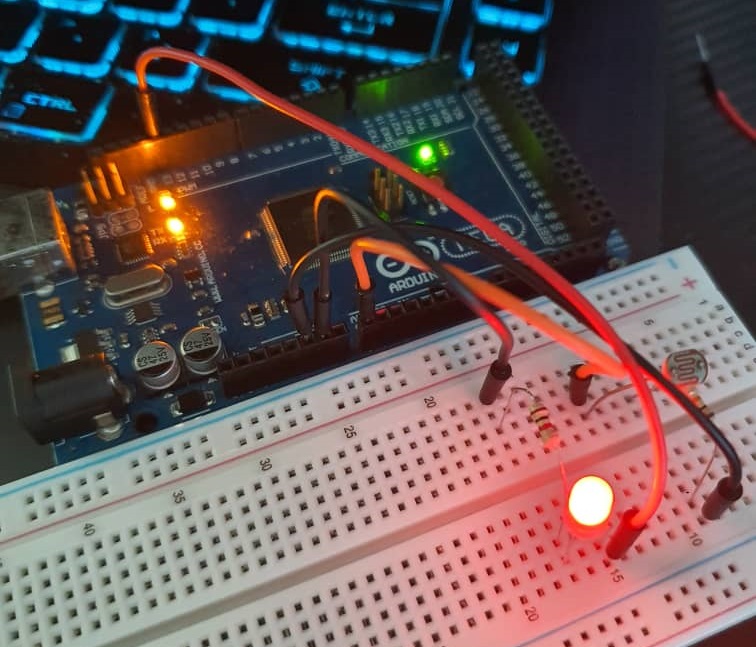What does Light Dependent Resistor work? A Light Dependent Resistor (LDR), also known as a photoresistor or photoconductor, is a type of resistor whose resistance varies significantly with the intensity of light falling on it. Here’s a detailed explanation of how an LDR works:
Working Principle
A. Material Composition:
LDRs are made from semiconductor materials such as cadmium sulfide (CdS) or cadmium selenide (CdSe). These materials have high resistance in the dark but lower resistance when exposed to light.
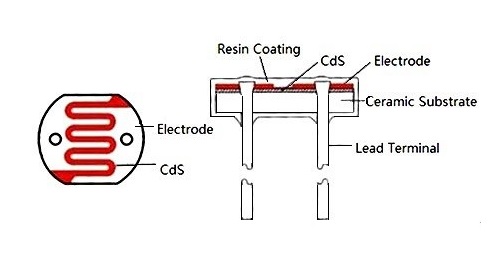
B. Photoelectric Effect:
When light photons hit the semiconductor material, they provide energy to electrons in the material. This energy excites the electrons, causing them to jump from the valence band to the conduction band, thereby increasing the number of free charge carriers (electrons and holes) in the material.
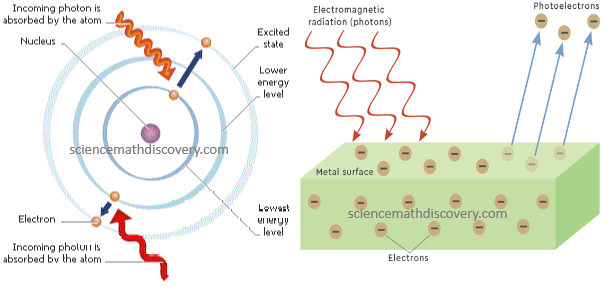
C. Change in Resistance:
In darkness or low light conditions, the semiconductor material has few free charge carriers, resulting in high resistance. When exposed to light, the number of free charge carriers increases, reducing the resistance of the material. The resistance of an LDR can change from a few megohms in the dark to a few hundred ohms in bright light.
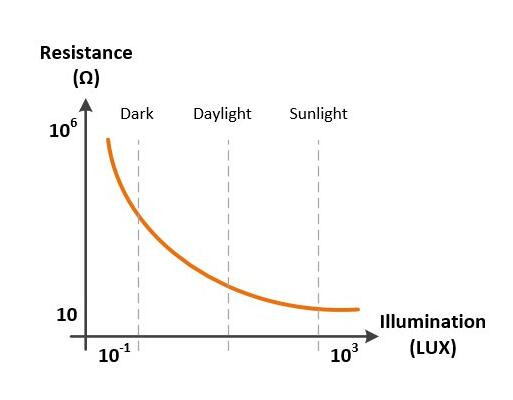
Characteristics
A. Sensitivity:
LDRs are sensitive to a wide range of light wavelengths but are most responsive to visible light. The sensitivity depends on the specific material used and the construction of the LDR.
B. Response Time:
LDRs have a relatively slow response time compared to other light sensors like photodiodes or phototransistors. The time taken for the resistance to change significantly can range from milliseconds to seconds.
C. Non-linear Response:
The relationship between the light intensity and resistance is non-linear. Typically, the resistance decreases exponentially with increasing light intensity.
Applications
A. Light Sensing Circuits:
LDRs are commonly used in circuits that need to respond to changes in light levels. Examples include automatic street lighting, night-lights, and garden lights.
B. Light Meters:
They are used in photographic light meters to measure the intensity of light.
C. Alarm Systems:
LDRs can be part of security systems where a change in light level triggers an alarm.
D. Optical Switches:
In some applications, LDRs are used to control switches based on light levels, such as in counting systems where objects interrupt a light beam.
Example Circuit
Below is a basic example of an LDR circuit connected to an Arduino, which reads the light intensity and controls an LED based on the ambient light.
Components:
- Arduino (e.g., Arduino Uno)
- LDR (Light Dependent Resistor)
- 10kΩ Resistor
- LED
- 220Ω Resistor
- Breadboard
- Jumper wires
Circuit Diagram:
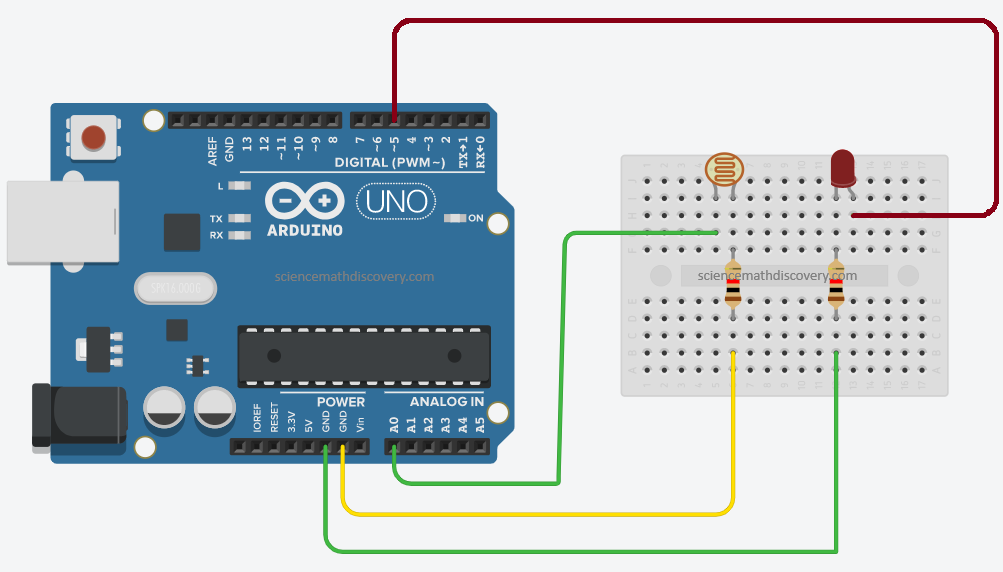
Arduino Code:
const int LDRPin = A0; // Analog pin connected to LDR
const int LEDPin = 5; // Digital pin connected to LED
int LDRValue = 0; // Variable to store LDR value
void setup() {
Serial.begin(9600); // Initialize serial communication
pinMode(LEDPin, OUTPUT); // Set LED pin as an output
}
void loop() {
LDRValue = analogRead(LDRPin); // Read the LDR value
Serial.println(LDRValue); // Print the LDR value to the Serial Monitor
if (LDRValue < 500) { // Adjust the threshold value as needed
digitalWrite(LEDPin, HIGH); // Turn on the LED if light level is low
} else {
digitalWrite(LEDPin, LOW); // Turn off the LED if light level is high
}
delay(100); // Short delay for stability
}
Operation:
- Reading the LDR Value:
- The
analogRead(LDRPin)function reads the voltage at the analog pin connected to the LDR, which varies based on the light intensity. This value ranges from 0 (0V) to 1023 (5V).
- The
- Controlling the LED:
- The code compares the LDR value to a threshold (in this case, 500). If the value is below the threshold (indicating low light), the LED turns on. Otherwise, it turns off.
Adjustments:
- Threshold Value: You may need to adjust the threshold value (500 in the example) based on your specific environment and LDR sensitivity.
- LED Pin: You can use any digital pin for the LED, just make sure to update the
LEDPinvariable accordingly. - LDR Resistor Value: Depending on the LDR and the range of light levels, you might need a different resistor value to get more accurate readings.
Summary
LDRs are versatile and straightforward components used to sense light levels. Their working principle relies on the photoelectric effect in semiconductor materials, causing a significant change in resistance based on light intensity. Despite their slower response time and non-linear characteristics, they are valuable in various practical applications requiring light sensitivity.
Expertise on Engineering.
Robotic and microcontroller are like toys to me.
I love playing with them.
